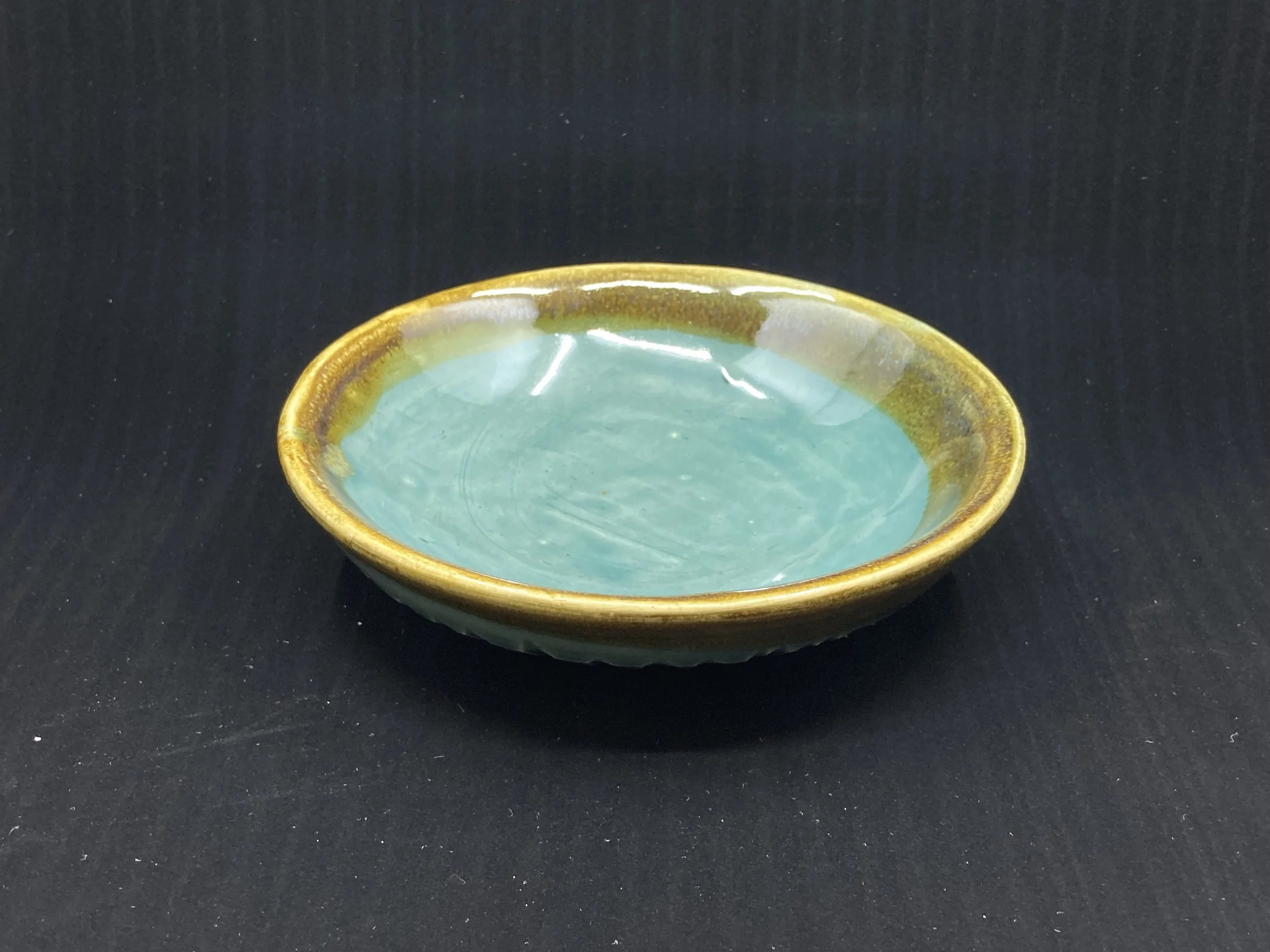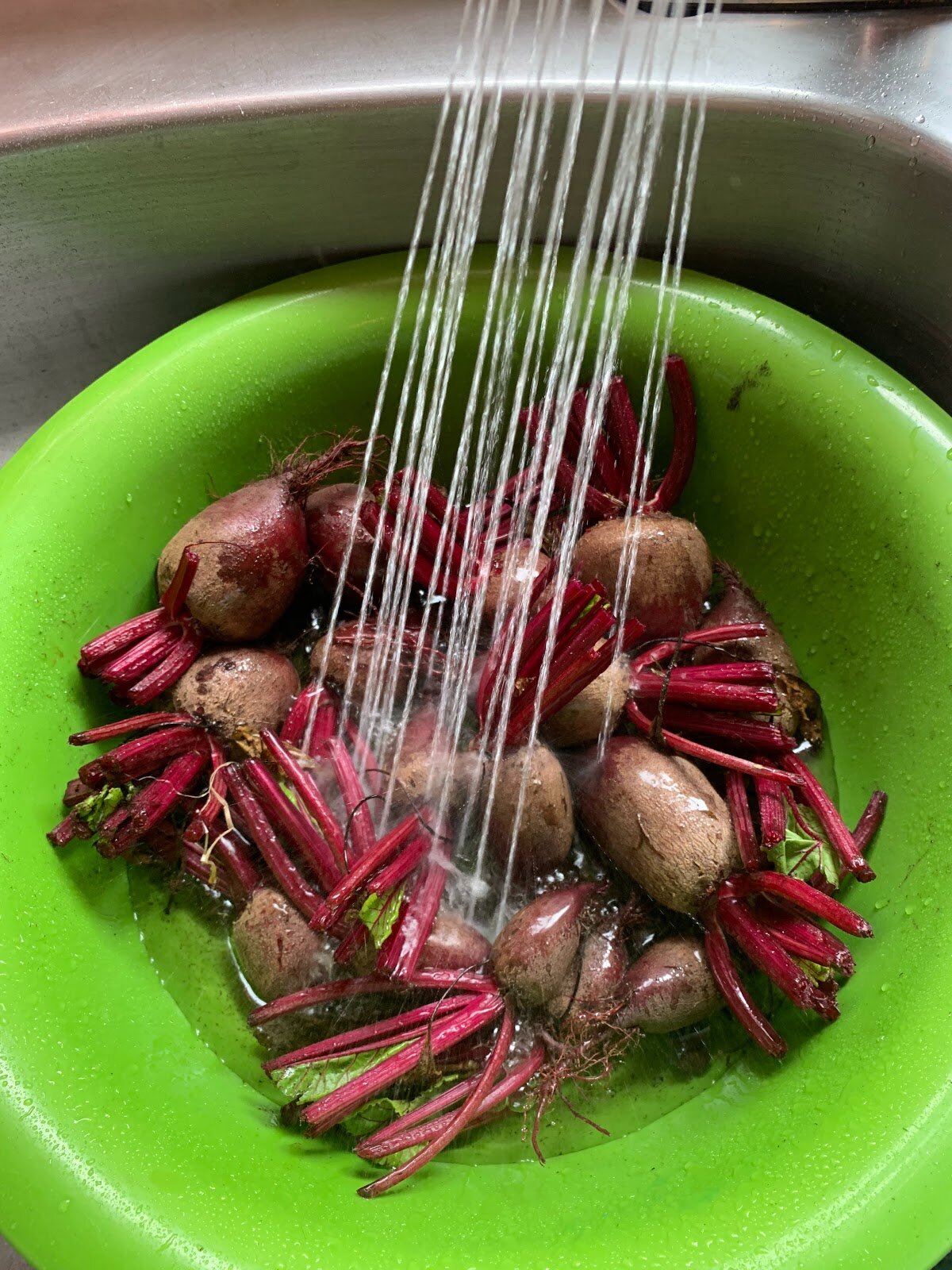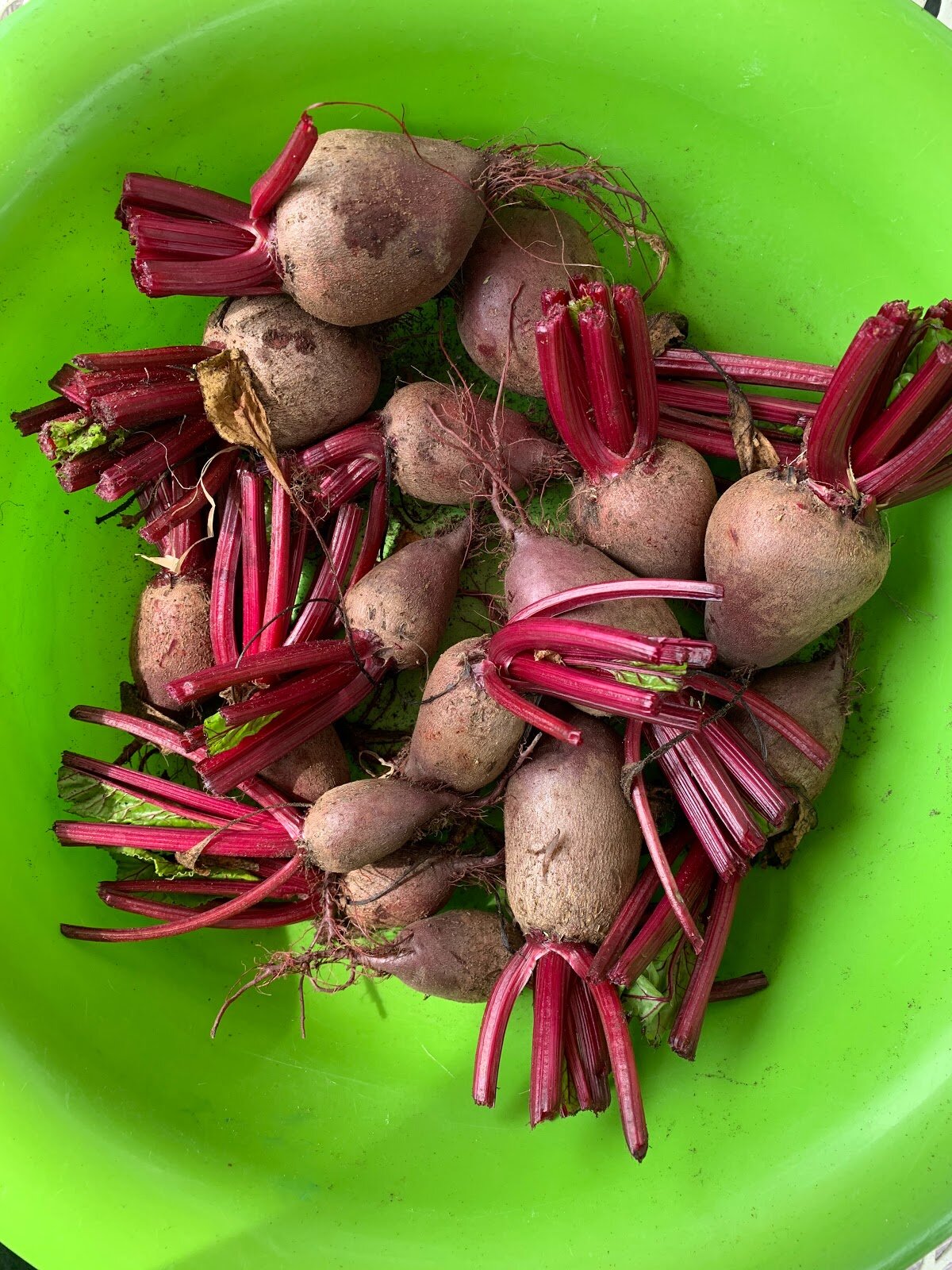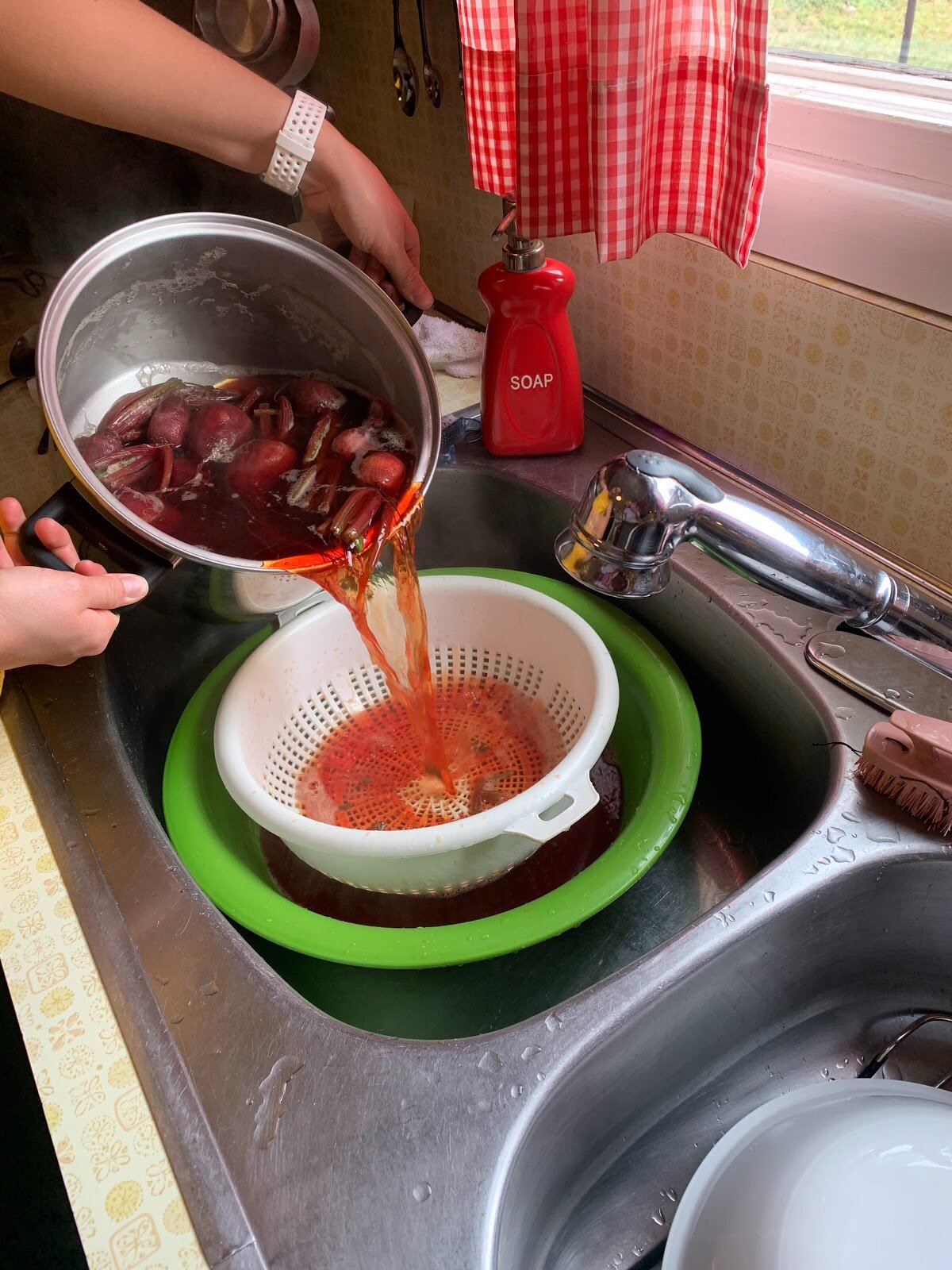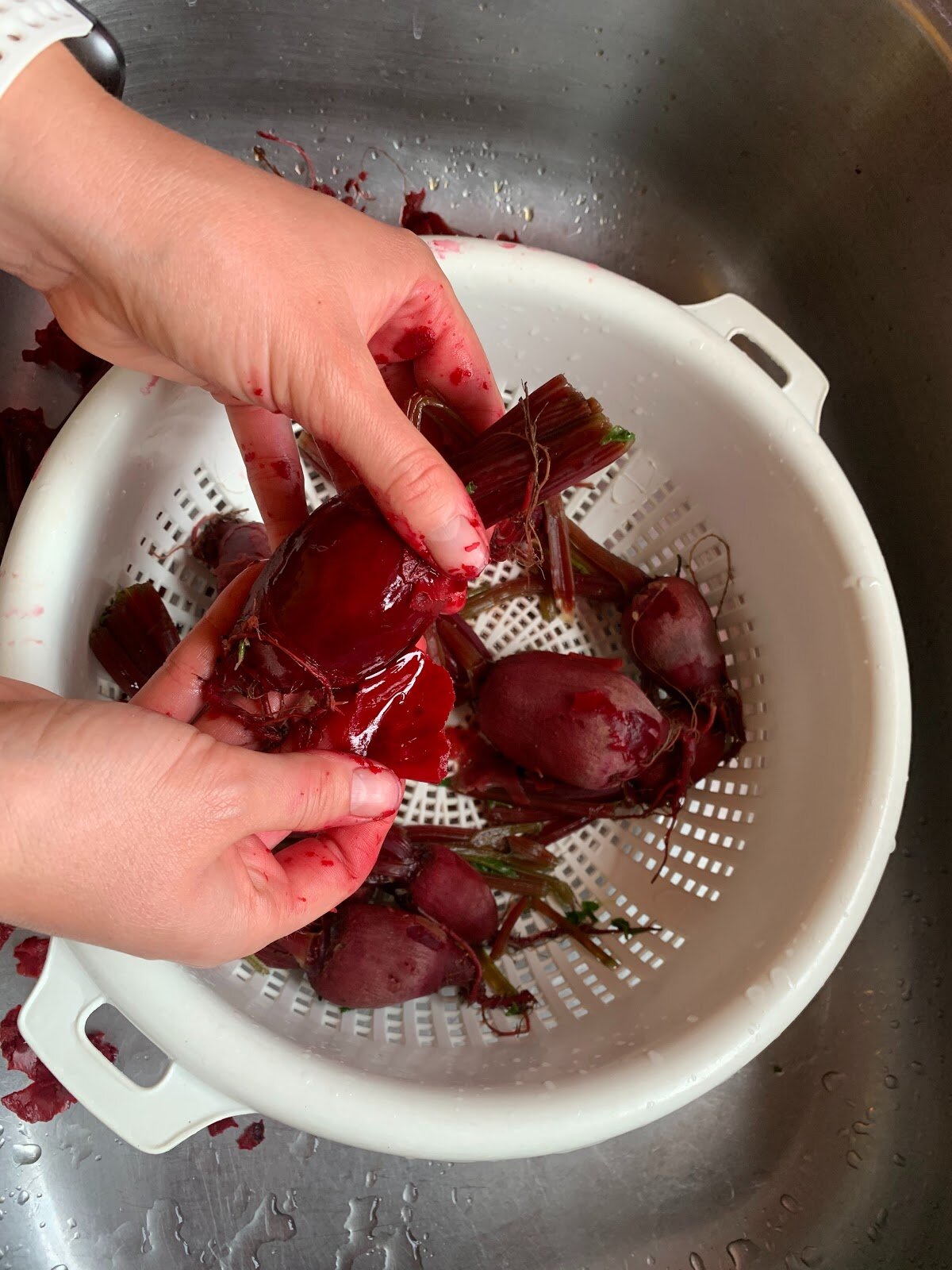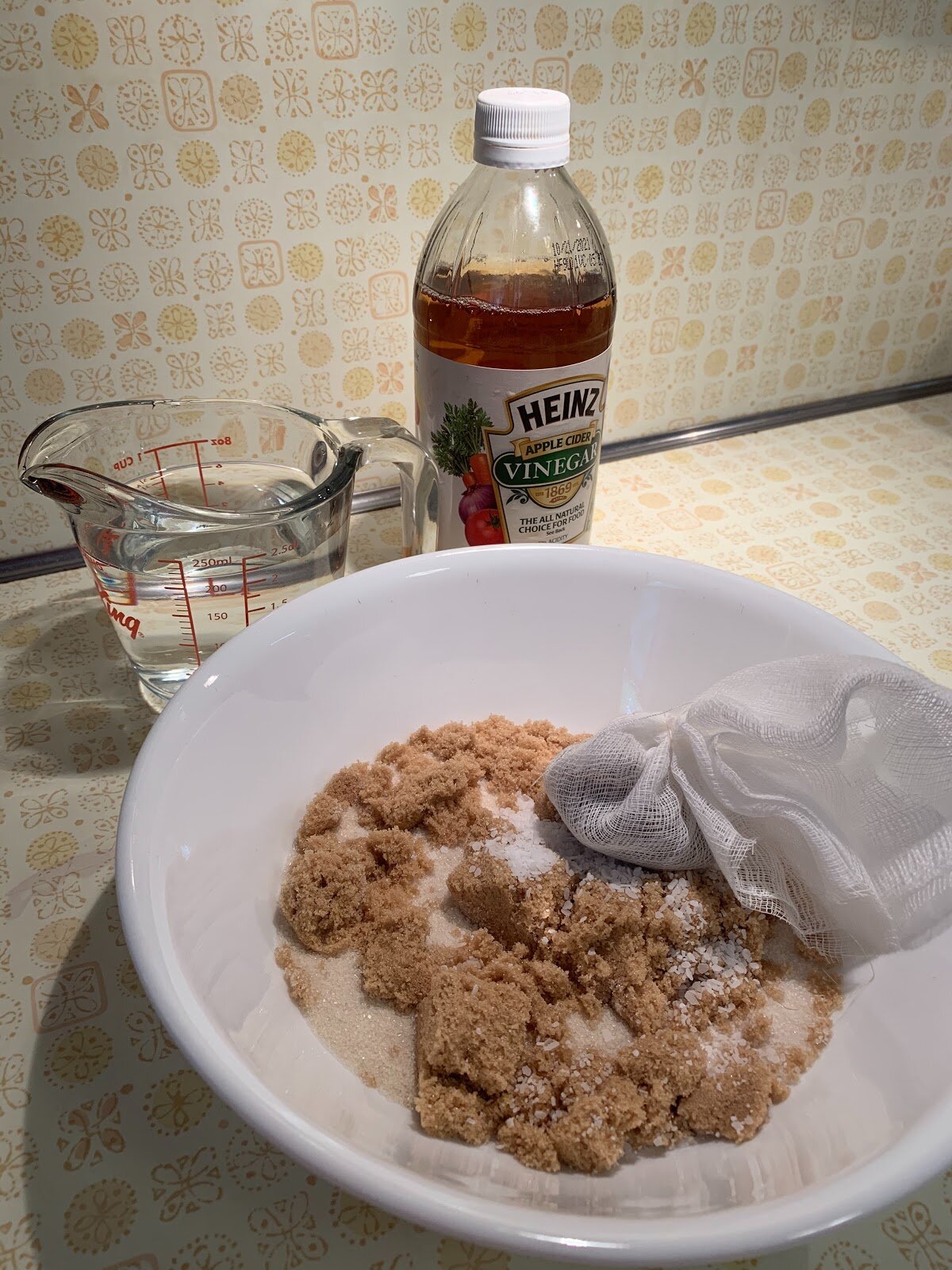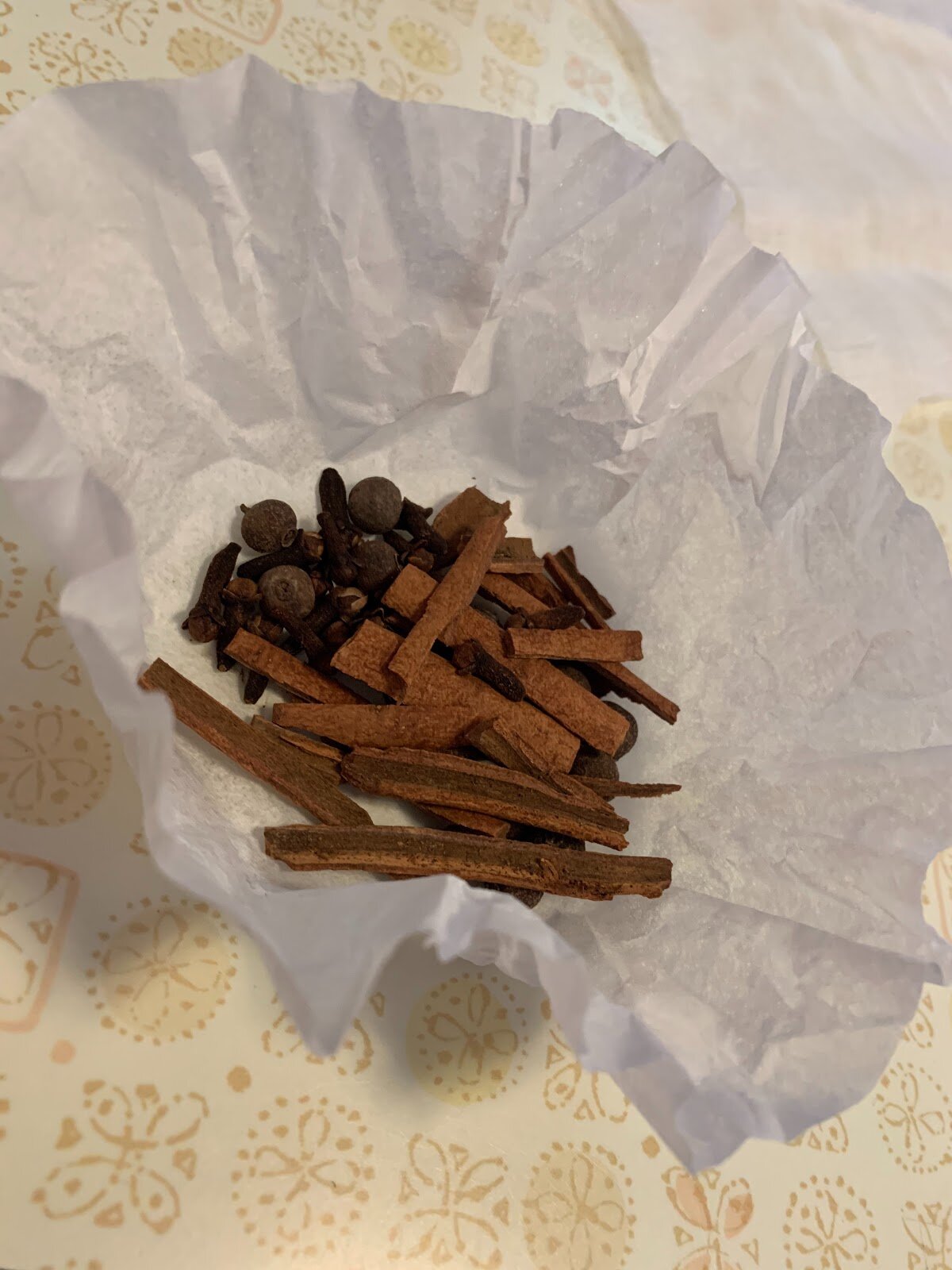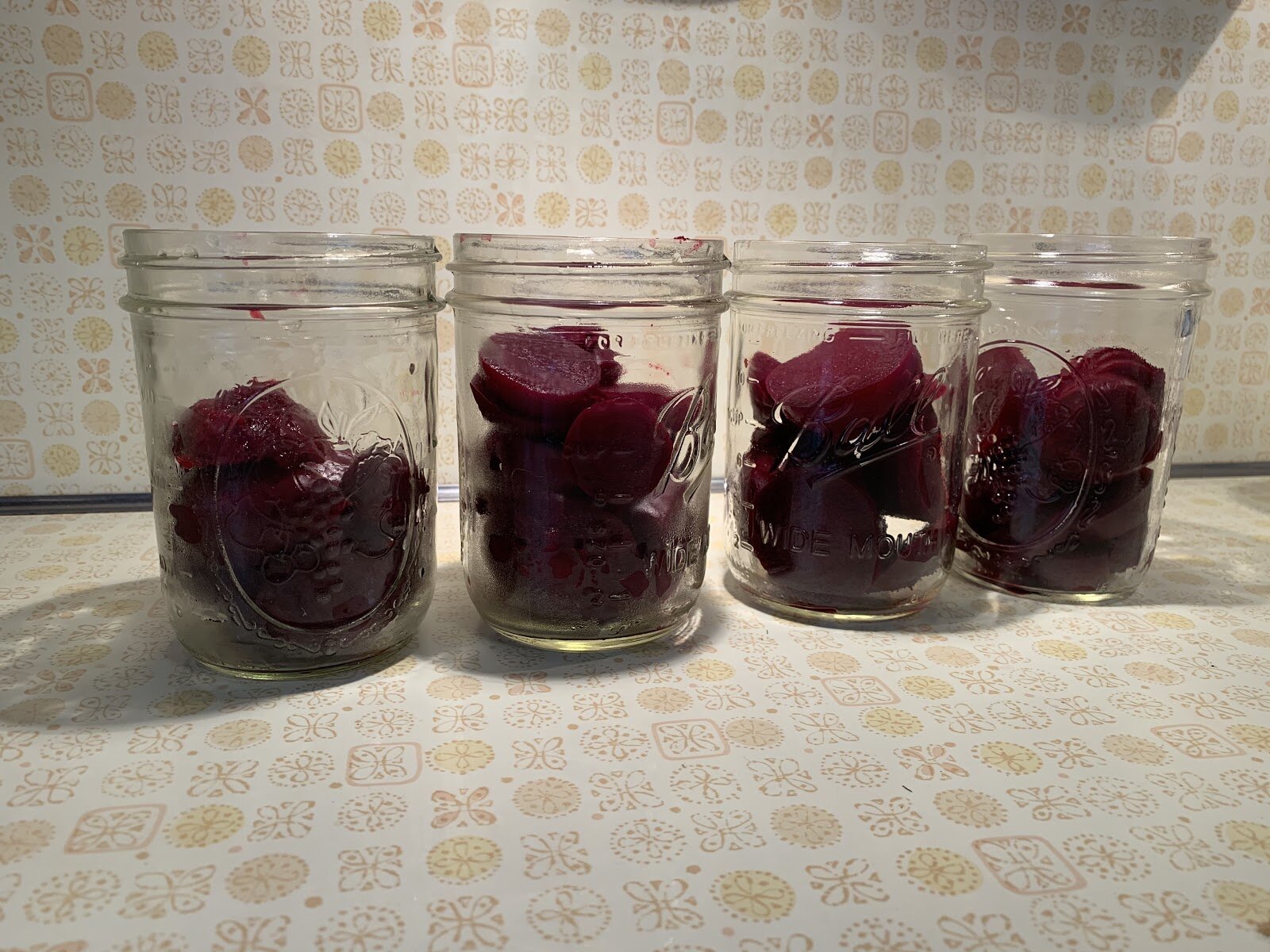Basic Pickled Beets
By Olivia May, Community Intern
Adapted from The Joy of Pickling by Linda Zeidrich
*Makes 4 Pint Jars*
Pickled beets are a delicious and nutritious way to add flavor and brightness to all your favorite dishes! They are an exciting and creative substitute for classic cucumber pickles on a burger, or they can make a salad really shine. You can also use everything beets have to offer! The greens are delicious just sauteed with garlic or check out this recipe for African Style Beet Greens.
NOTE: This pickled beets recipe is only suitable for canning as written and should not be modified if you plan to can it. If you don’t feel up to canning, no problem! You can simply put the beets in your refrigerator and enjoy after 3 weeks (for best flavor development). In a covered container in the refrigerator, they will keep roughly two months.
Find more Beet recipes on the Beets: October Harvest of the Month page!
Step “Zero” would be to get yourself some beets! Poughkeepsie Farm Project has some gorgeous beets coming into season as we speak. Harvesting is very straightforward with a firm, steady tug at the base of the stem.
Step One
Give your beets a good bath and a scrub to get any dirt off. Boil them in a large pot until they are just tender. This should take 15 to 35 minutes depending on their size.
That lovely red color likes to stain, so keep that in mind when choosing dishware and what you wear. Speaking of color, when you trim off the greens be sure to leave about 2 inches of the stems intacted to preserve as much color as possible. I found letting the beets soak in lukewarm water for a few minutes before using a soft dish brush helpful with getting more of the dirt off.
Step Two
Drain your beets and put them in a cool water bath. When they are a comfortable temperature to handle you can slip off the skin and trim off what is left of the tops. Depending on their size, you can either leave them whole, quartered, or halved. If you prefer you can also slice all the beets, regardless of size, into ¼-inch-thick rounds.
If you do a good job scrubbing your beets before boiling them you can save this luscious red liquid and add it to smoothies, use it in soups and stock, or just drink it right up. It is packed with vitamins and minerals. It is an awesome substitute for juice! I like to mix it half-and-half with orange juice once it is cooled.
Step Three
Wrap up your spices (cloves, cinnamon, and ginger) in a spice bag or scrap of cheesecloth and tie it closed with twine or string. Put this along with your sugar, vinegar, and salt in a nonreactive pot. Boil, stirring often to help the sugar and salt dissolve. Simmer for 10 minutes, uncovered.
If you don’t have a spice bag or scrap of cheesecloth you can just tie up the spices in a coffee filter. The spices you choose will really change the flavor profile of your dish. Get creative here! Mind your time during this step. Take the opportunity while this is simmering to get your big pot of water boiling for step four. I made the mistake of delaying until my mason jars were ready and waiting for their last bath before starting to boil the water. I speak from experience when I say a watched pot never boils.
Step Four
While that simmers take the opportunity to put your beets in the mason jars. Note that sliced beets should be packed loosely. After 10 minutes add the liquid to the jars leaving ½ inch headspace and seal with hot two-piece caps. Boil the jars for an additional 30 minutes.
Putting an old dish towel at the bottom of the pot will prevent the jars from rattling. Also be mindful of displacement when you fill up your pot of water. The jars will take up a lot of space in the pot so do not fill the water all the way to the top. If you over fill, you can always just carefully spill some out before adding the jars but keep an eye on the water line, we don’t want boiling hot water spilling everywhere.
Step Five
After 3 weeks in a cool, dry, dark place your beets will be ready to eat! They are so delicious everyone wants a bite.
Recipe:
Basic Pickled Beets
*Makes 4 Pint Jars*
3.5 pounds beets, with their rootlets and 2 inches of tops
1 cinnamon sticks, broken
½ teaspoon whole cloves
½ cup sugar
½ cup brown sugar
1 tablespoons pickling salt
2 cups cider vinegar
1 cups water
Give your beets a good bath and a scrub to get any dirt off. Boil them in a large pot until they are just tender. This should take 15 to 35 minutes depending on their size.
Drain your beets and put them in a cool water bath. When they are a good temperature to handle you can slip off the skin and trim off what is left of the tops. Depending on their size you can either leave them whole, halved or quartered. If you prefer you can also slice all the beets regardless of size into ¼-inch-thick rounds
Wrap up your spices (cloves, cinnamon, and ginger) in a spice bag or scrap of cheesecloth and tie it closed with twine or string then combine with sugar, wine, vinegar, and salt into a nonreactive pot. Boil, stirring often to help the sugar and salt dissolve. Simmer for 10 minutes, uncovered.
While that simmers take the opportunity to put your beets in the mason jars. Note: Sliced beets should be packed loosely. After 10 minutes add the liquid to the jars leaving ½ inch headspace and seal with hot two-piece caps. Process the jars in a boiling water bath for 30 minutes. For more information on how to can, check out the National Center for Home Food Preservation.
After 3 weeks in a cool, dry, dark place your beets will be ready to eat! Reminder: if you opted not to can, you will need to store them in the fridge.
Can’t get enough of this Month’s Harvest of the Month? Check out the October HOTM page for more beet recipes and information!
Behold the bright red beet! The summer harvest season may be winding down, but beets are one colorful vegetable that you can harvest long into the fall.





